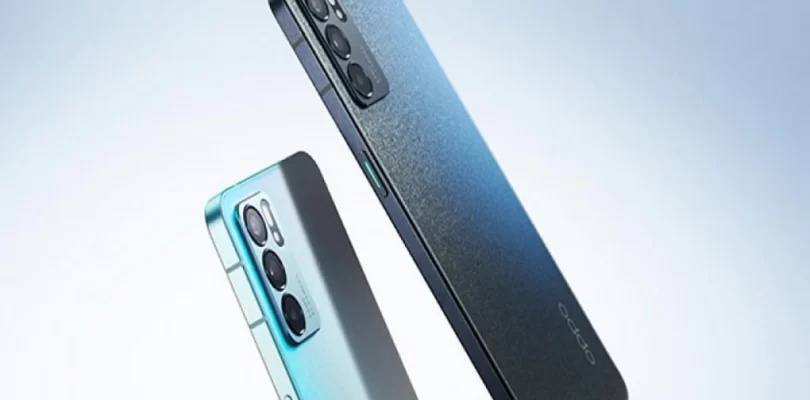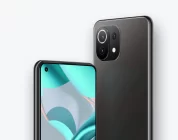OPPO Reno6 Pro 5G, analysis: the joy that they still surprise you in something you did not expect
OPPO continues to strengthen its presence in European shop windows without resorting to aggressive pricing. In return, it offers interesting features like some of the ones we see in the OPPO Reno6 Pro 5G review.
This mobile is placed in that mid-semi-high range whose appearance has favored the line of Qualcomm processors that is among the most powerful for the mid-range (700 series) and the most powerful of the high (800 series), which in this case is accompanied by a telephoto lens and 12 GB of RAM among other aspects. Let’s see what the experience with him is like.
The curvature of the panel does not offer any addition per se beyond aesthetics. It may seem more or less attractive according to our tastes, but it does not provoke ghost touches or malfunctioning the “back” gesture. Of course, as usual, depending on how we see the mobile, we can see the shadows that the curvature projects on the sides, something that is not a drama but that we do not see in flat panels.
The hole for the front camera does not interfere with the games or full-screen apps that we have tested. It makes the taskbar taller than necessary, but it is also not more than what we usually see with this approach in general.
The OPPO Reno6 Pro has the Snapdragon 870 with 12 GB and 256 GB (UFS 3.1) as the only option for memory. With this, the mobile provides a good experience with demanding software without seeing striking or unusual increases in temperature.
So that you have the usual references, we leave you below the results of the benchmarks that the OPPO Reno6 Pro has given us, compared to other mobiles with similar or superior hardware.
Software: options, options, bloatware, and options
Waiting for ColorOS 12 to reach the brand’s mobiles, OPPO installs the latest public version of its software to the Reno6 Pro, ColorOS 11.3 on Android 11.
The system comes from the factory with some bloatware. It gives the impression that this practice will decrease in general, but in this case, we still see apps like Facebook or Booking, in addition to all those of Google and its utilities, if bien can be removed.
The OPPO software, increasingly closer to the Realme, is one of the layers that gives more customization options, as we have already introduced in the screen section. In this case, the option to illuminate the edges is added to give something more useful to the curvature of the screen.
It also incorporates the usual game mode, which provides some shortcuts and information such as the temperature on the side of the screen (hidden in a tab). It is not one of the most specific that we have seen, but it does have a series of customization in terms of notifications and some functions that those who prefer to have a distraction-free experience with the games will appreciate.
Besides being complete, the software is stable and works correctly, without appreciating bugs or errors. It is true that in some animation, we can see some slight stoppage and that in that sense, it may need some optimization, but it is something anecdotal that many users may not perceive.
As for the biometric options, we see that the Reno6 Profits into the usual and that it has facial recognition and fingerprint reader, which is placed on the screen. The experience with both systems is correct, and we have not detected problems, being effective unlocks in most cases. The face reading does not work in the dark, but we can pull the support light or the always active fingerprint reader, which is also very efficient.
Cameras: the night unbalances a promising result
One of the things that makes sense of the Pro surname over the base Reno6 is the choice of cameras. Although we see a lower resolution sensor, the Pro incorporates a telephoto lens and optical stabilization in the main camera, which we usually see when the manufacturer seeks to give something more complete in photography. This is the composition of lenses and sensors:
50 megapixel Sony IMX766 main sensor with OIS and lens with f / 1.8 aperture.
16 megapixel Sony IMX481 wide-angle lens with f / 2.2 aperture and 119 degrees field of view.
A telephoto lens with 13 megapixel Samsung S5K3M5 sensor with f / 2.4 aperture lens and 2x optical zoom.
OmniVision OV02B10 2 megapixel macro sensor with f / 2.4 aperture lens.Camera app
The OPPO application does not leave a single loose end when taking advantage of that camera equipment that we have just reviewed. It has an automatic mode to choose between the tele, the wide-angle, and the main one, with manual or automatic HDR and the usual (and of questionable utility), AI button.
Something that is not usual is that manual or automatic HDR can also be applied to 50 megapixels. There is no mode like portrait or night mode to shoot with them, but you have to display the options at the top.
There are tabs for portrait mode, night mode, video, and others, and you can customize them. Macro mode is one of these.
Oppo Reno6 Pro 06 02 Camera Settings
The app works correctly, and we do not see that there is lag or any strange behavior. It has the most common options and those that somewhat more demanding users can look for, with comfortable navigation for photo and video options.
Rear cameras
The main camera of the OPPO Reno6 Pro is quite off-road and tends to be successful in most situations. Auto shooting already has a good dynamic range and realistic colorimetry without pulling oversaturation and with a correct white balance, although HDR is a good resource for backlighting.
Photography in automatic mode (main lens, 12 megapixels).
This HDR can be a support or something not to recommend depending on the lens and the situation. Without too much demand, we will not see changes in any of the lenses, but in the backlights with abundant light, we can see a somewhat forced result (oversaturated, although without much penalty). It is better to avoid it at night / poorly lit interiors in the three lenses, especially in the wide-angle, seeing much more noise than in the automatic.
OPPO Reno6 Pro 5G, analysis: the joy that they still surprise you in something you did not expect
OPPO continues to strengthen its presence in European shop windows without resorting to aggressive pricing. In return, it offers interesting features like some of the ones we see in the OPPO Reno6 Pro 5G review.
This mobile is placed in that mid-semi-high range whose appearance has favored the line of Qualcomm processors that is among the most powerful for the mid-range (700 series) and the most powerful of the high (800 series), which in this case is accompanied by a telephoto lens and 12 GB of RAM among other aspects. Let’s see what the experience with him is like.
The curvature of the panel does not offer any addition per se beyond aesthetics. It may seem more or less attractive according to our tastes, but it does not provoke ghost touches or malfunctioning the “back” gesture. Of course, as usual, depending on how we see the mobile, we can see the shadows that the curvature projects on the sides, something that is not a drama but that we do not see in flat panels.
The hole for the front camera does not interfere with the games or full-screen apps that we have tested. It makes the taskbar taller than necessary, but it is also not more than what we usually see with this approach in general.
The OPPO Reno6 Pro has the Snapdragon 870 with 12 GB and 256 GB (UFS 3.1) as the only option for memory. With this, the mobile provides a good experience with demanding software without seeing striking or unusual increases in temperature.
So that you have the usual references, we leave you below the results of the benchmarks that the OPPO Reno6 Pro has given us, compared to other mobiles with similar or superior hardware.
Software: options, options, bloatware, and options
Waiting for ColorOS 12 to reach the brand’s mobiles, OPPO installs the latest public version of its software to the Reno6 Pro, ColorOS 11.3 on Android 11.
The system comes from the factory with some bloatware. It gives the impression that this practice will decrease in general, but in this case, we still see apps like Facebook or Booking, in addition to all those of Google and its utilities, if bien can be removed.
The OPPO software, increasingly closer to the Realme, is one of the layers that gives more customization options, as we have already introduced in the screen section. In this case, the option to illuminate the edges is added to give something more useful to the curvature of the screen.
It also incorporates the usual game mode, which provides some shortcuts and information such as the temperature on the side of the screen (hidden in a tab). It is not one of the most specific that we have seen, but it does have a series of customization in terms of notifications and some functions that those who prefer to have a distraction-free experience with the games will appreciate.
Besides being complete, the software is stable and works correctly, without appreciating bugs or errors. It is true that in some animation, we can see some slight stoppage and that in that sense, it may need some optimization, but it is something anecdotal that many users may not perceive.
As for the biometric options, we see that the Reno6 Profits into the usual and that it has facial recognition and fingerprint reader, which is placed on the screen. The experience with both systems is correct, and we have not detected problems, being effective unlocks in most cases. The face reading does not work in the dark, but we can pull the support light or the always active fingerprint reader, which is also very efficient.
Cameras: the night unbalances a promising result
Video
Optical stabilization is more noticeable here than in night shooting, making that super-stable mode that many manufacturers insist on adding is somewhat forced and rather dispensable. During the day, we see somewhat oversaturated videos, but in general, they are fine either at 4K or 1080p.
The change of lenses can always be done (except in super-stable mode), whether the resolution and in the full recording is rather smooth. At night we see that the stabilization is absent a bit, which we did not expect in this case, seeing something more noise than expected.
Autonomy: the real surprise
Just as the OPPO Find X3 Pro left us somewhat cold with autonomy, the Reno6 Pro has given us better results, and it becomes a strong point in the experience. As a base part of a 4,500 mAh battery, which without being something surprising is not bad and is within the current average in mobile phones with these diagonals.
Thus, considering the hardware and alternating periods of Wi-Fi / 4G and 60/90 Hz maximum, the average given us is 32.2 hours of autonomy per charge with about 12 hours of screen. The good data does not stop there, since, in normal use (little time of play, more video, and music, more Wi-Fi than data), the hours per charge do not differ much between one refresh rate or another.
The maximum autonomy that we have obtained is 38 hours with 60 Hz and the minimum of 25 hours with 90 Hz, in the latter case with many hours of video. Adding to the spectacular OPPO fast charge, this gives a very good experience, with just 30 minutes to charge the battery from 0 to 100% with its 60-watt charger.
Oppo Reno6 Pro 07 Test
PCMark test at 90 Hz. It is not a surprising result; however, in the day to day, 90 Hz has surprised us for good at the consumption level.
Audio: defends itself without highlighting.
As we said in the design section, the manufacturer has not left a hole for the 3.5-millimeter connector. For headphones, we have Bluetooth or USB type C, with stereo sound at the level of external speakers.
Oppo Reno6 Pro 5g 08 Sound
The audio is correct, without highlighting especially but complying with the minimum quality we expect in mobile with a dual output. It is a clear sound, without hawking or other problems, and with a more than acceptable dynamic range.
The maximum volume is between 105-108 decibels at the speaker output, about 80 ambient. But the best experience is around 50% of the volume, without the distortion that occurs when turning up to the maximum.




